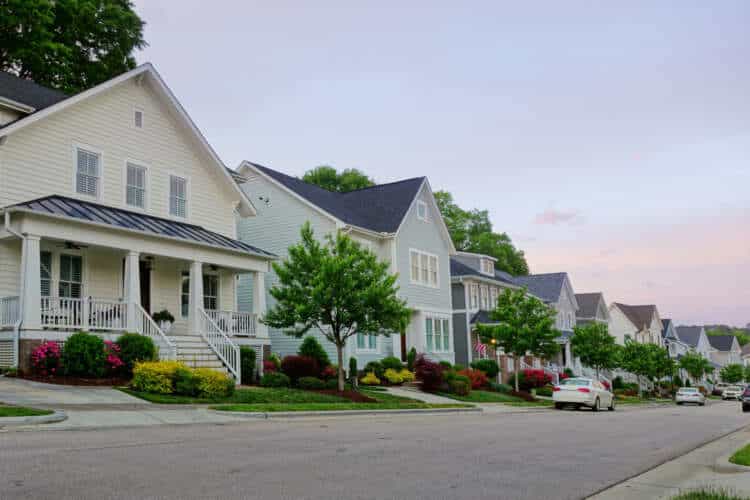Veterans’ Mortgage Life Insurance (VMLI)
Updated: December 22, 2020
Veterans’ Mortgage Life Insurance (VMLI) is an option offered to the families of veterans with qualifying service-connected disabilities who meet the eligibility criteria described below. That eligibility includes being a homeowner–VMLI is a bit more complex than some of the other SGLI and SGLI-adjacent insurance options.
This particular type of insurance does not pay benefits to the veteran or family, but rather directly to the lender who issued your mortgage loan.
Who Qualifies For Veterans’ Mortgage Life Insurance
VMLI is basically “mortgage protection”. That means it’s a type of insurance offered to the families of veterans with severe service-connected disabilities. These veterans must have adapted a home to fit their needs using a specific VA program (see below). To qualify for VMLI all of the following must be true:
- The veteran has “a severe disability that we’ve concluded was caused—or made worse—by your service” according to the Department of Veterans Affairs.
- The veteran must have applied for and been approved for a Specially Adapted Housing (SAH) grant which is offered to vets with qualifying disabilities to buy, build, or adapt a home to make it more accessible. These adaptations can include but are not limited to installing ramps, wider doorways, etc.
- The veteran or family must have the title of the home, and have an existing mortgage.
- The veteran must be under 70 years of age.
An Important Caveat
VMLI coverage is only offered for primary residences. You cannot get VMLI for investment properties, summer homes, timeshares, or other occasional-occupancy type property. The same occupancy rules applicable to VA mortgages is generally the rule of thumb for this type of mortgage insurance coverage.
Before You Apply For VMLI
In order to be considered for this type of mortgage life insurance, the veteran is required to first apply for a Specially Adapted Housing Grant or SAH. If you have not done so, take this step first. Who generally qualifies for SAH? Those who have any of the qualifying conditions listed below:
- The loss of more than one limb
- The loss of use of more than one limb
- The loss or loss of use of a lower leg combined with lasting issues associated with disease or injury
- Blindness in both eyes having only light perception combined with the loss or loss of use of a leg
- Severe burns that meet SAH criteria
- The loss or loss of use of one leg or foot occurring after Sept. 11, 2001, resulting in the inability to walk or balance without assistance
Your loan servicer or loan guaranty agent may be able to tell you if you qualify for VMLI, or you can apply using the Application for Veterans’ Mortgage Life Insurance (VA Form 29-8636).
If you have already applied for and received SHA, ask your loan servicer or call the Department of Veterans Affairs for more assistance on applying for VMLI.
VMLI Benefits
VMLI provides up to $200,000 in mortgage life insurance coverage. This coverage is not paid to a beneficiary such as a family member or spouse; instead it is paid directly to the bank servicing your mortgage.
The amount paid will vary; it depends on how much was still owed on the mortgage loan. The maximum benefit is capped at $200,000.
That means the amount of your insurance coverage decreases over the lifetime of the loan. As the amount you still owe on the home loan decreases, your coverage goes down, too. VMLI coverage terminates when you have paid the loan in full.
Unlike certain life insurance products, VMLI does not carry a cash value and you cannot borrow against it. There are no dividends paid. All applicants are required to submit forms prior to their 70th birthday.
VMLI Premiums
VMLI premiums are established using the applicant’s age, current mortgage balance, the number of payments required to fully pay off the mortgage, and the amount of coverage you need. You can use a payment calculator at the VA official site to get an estimate of the amount you’ll pay for this coverage.
What To Do If Your Mortgage Changes
As mentioned earlier, the property you insure with VMLI must be your primary residence. If you sell your home, transfer it to another person via a loan assumption, transfer your mortgage, move, or make other changes you are required to notify the Department of Veterans Affairs.
If you liquidate your home, do a deed-in-lieu of foreclosure, short sale, or arrange a private sale as a foreclosure avoidance tactic, you must notify the VA.
The same is true if you refinance your mortgage regardless of the type of refi loan or the motivation behind it. Notify the VA in writing by submitting information to the following address:
Department of Veterans Affairs
Regional Office and Insurance Center
PO Box 7208 (VMLI)
Philadelphia, PA 19101
When contacting the Department of Veterans Affairs, be sure to include all relevant information including the case number assigned to your government-backed mortgage where applicable (VA, FHA, USDA), the amount of your loan, and any other identifying information that is relevant to your mortgage and your application for VMLI.
 Joe Wallace is a 13-year veteran of the United States Air Force and a former reporter for Air Force Television News
Joe Wallace is a 13-year veteran of the United States Air Force and a former reporter for Air Force Television News


































































